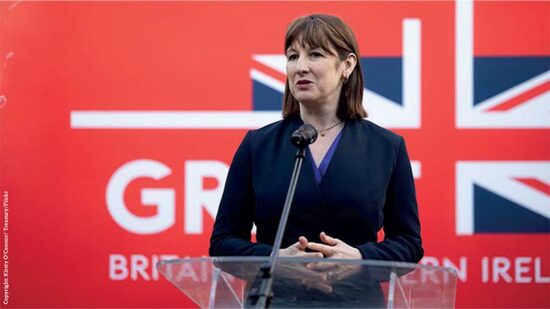Over the last few years there has been a growing commitment from companies in the financial landscape to address the gender imbalance and attract more women to the sector, writes Sandra Robertson, group chief executive at iPensions Group.
A number of initiatives followed the launch of the Women in Finance Charter – but more can be done. It’s an industry-wide responsibility, and it’s up to every one of us to actively encourage and sustain change.
Here at iPensions Group, our success is very much dependent on our people. We identify and support unique talents, experiences and perspectives, and we always ensure equal opportunities. As a result, we have a well-balanced senior management team, with women holding just over 50% of the senior and director roles.
So, how do we attract and promote women in leadership? While there isn’t a one-size-fits-all solution to tackle the gender imbalance, I recommended looking at the following areas for creating inclusive workspaces that thrive on team diversity.
Retain your inspiration
My experience over the years has shown that it is possible to attract women at the early stages in their career, however the balance starts to drift as females approach management level.
What’s concerning is, although there’s been an increase in women in management and senior roles, post-pandemic, we’re seeing women across the industry leaving the positions they’ve worked so hard to attain. This then reduces the role models available to bring in the next generation.
These leaders are an inspiration for their achievements, so do everything you can to retain them. Ensure an equal and inclusive workplace where women of all backgrounds feel valued, supported and recognised. Not only will you hold onto them, you’ll create the future influx of female leaders.
Women need to know that it’s possible to secure such positions – and the best way is by seeing people in these roles. This is what will support the long-term change for gender balance.
Provide true flexible working
While both women and men have additional caring responsibilities, it’s often females who feel they can’t juggle the demands of a senior position and being a carer of children or elderly parents.
Therefore, it is crucial that flexible working arrangements enable them to fulfil all their roles. But it needs to be true flexible working.
You should review how policies could be improved to meet employee requirements better. It needs to be available to all, so women feel comfortable discussing it, plus supported by their employer.
The ability to switch quickly between roles is often required unexpectedly, and necessitates the full support of the organisation.
This will ensure there’s no undue embarrassment, guilt or pressure, plus enable them to be ‘present’ and focus their attention where it needs to be at the time.
Challenge the past
History has seen the lack of flexibility result in some women having to take a particular path, or even fight, to secure a leadership position.
They may have had to return to their roles after three months’ maternity leave, work long hours, and barely see their child.
But this doesn’t mean it should be accepted and expected for the next generation.
Our goal is to challenge the past. Reflect the current environment and don’t expect females to follow in someone else’s footsteps. Instead, create a leadership journey that works for them.
Offer mentoring
Mentoring is key for attracting females to senior roles, and retaining them. This will help them to see their potential and remove some of the unconscious bias that exists.
In my experience, while organisations can be supportive of opening up opportunities, and have the right policies in place, females often hold themselves back from progression.
It’s been called the ‘sticky floor’, where females don’t believe in their own abilities. Like ‘imposter syndrome’, this trait is more commonly found in women.
That’s why it’s our responsibility as female leaders to help and encourage women throughout their careers.
Mentoring is critical – perhaps start an official mentorship programme, or ensure the chief executive is available and authentic, and encourages female talent within the organisation.
Remember the benefits
Lastly, know why you’re trying to attract and promote female leadership. There are numerous advantages.
Having spent over 30 years in leadership roles across the financial services sector, I’ve witnessed diversity bring new skills, add cultural difference, drive innovation, and increase productivity.
Diversity and inclusivity generate creative ideas, better solutions, new outlooks, and ultimately fuel sustainability and growth.
But diversity in the workplace shouldn’t just prioritise women – it should support a fluid combination of both genders throughout the organisation.
This is the way forward. Let’s leave the past, in the past.
This article was written for International Adviser by Sandra Robertson, group chief executive at iPensions Group.








